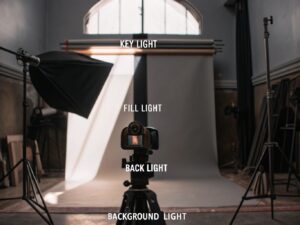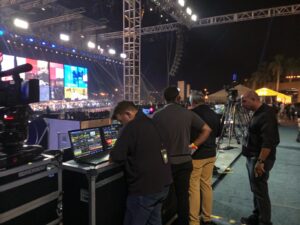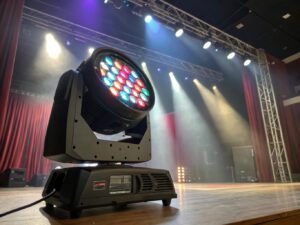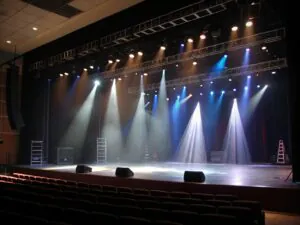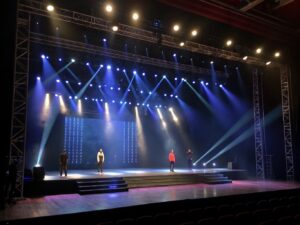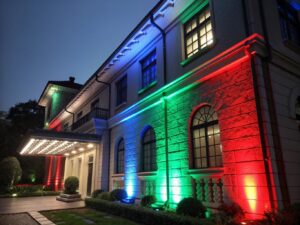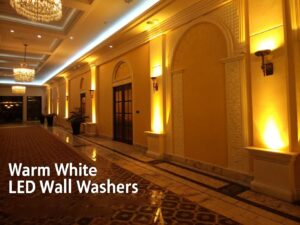
Why Is the LED PAR the Unsung Hero of Stage Lighting?
Your lighting rig is full of complex moving lights, but your budget is stretched thin. You still need reliable, powerful color washes1 and accent lights without the high cost and programming time.
An LED PAR is a simple, powerful, and cost-effective lighting fixture. It uses an LED engine and a lens system to create a strong, directional beam of light, making it the essential workhorse for color washes, uplighting, and general stage illumination.

In all my 19 years in the stage lighting industry, I've seen countless trends come and go. Yet, the humble PAR light has remained a constant. It's the first fixture most technicians learn, and it's the one that veterans still rely on for its sheer utility. Today's LED PAR2s are a world away from the hot, power-hungry cans I started with, but their core purpose is the same: to provide reliable light, day in and day out. They are the backbone of almost every lighting design for a reason.
What does PAR mean in stage lighting?
You see the term "PAR" on every spec sheet, but what does the acronym actually describe? It’s not just a name; it explains the very principle that makes the light so effective.
PAR stands for Parabolic Aluminized Reflector3. This describes a lamp and reflector design where a parabola-shaped mirror gathers light from the source and projects it forward as a powerful, concentrated beam.

The magic is in the physics. A parabola has a special geometric property: any ray of light originating from its focal point will reflect off the surface in a parallel line. The original PAR lamps were sealed-beam units, much like a car's headlight, with the filament perfectly placed at the focal point of a built-in parabolic reflector. This design is incredibly efficient at converting a small light source into a "punchy," intense beam of light that can travel a long distance. While other lights use different reflector shapes for different purposes, the PAR's parabolic design is what gives it its signature powerful, direct beam, making it perfect for cutting through the ambient light on stage.
What is PAR in an LED fixture?
The concept of a PAR was born from a sealed glass lamp. So how does this term apply to a modern fixture that uses solid-state LED chips instead of a filament?
In an LED fixture4, "PAR" now refers to the fixture's function and form factor, not a physical reflector. It describes a static "can-style" wash light that produces the same powerful, directional beam as its predecessor, but with modern LED technology.
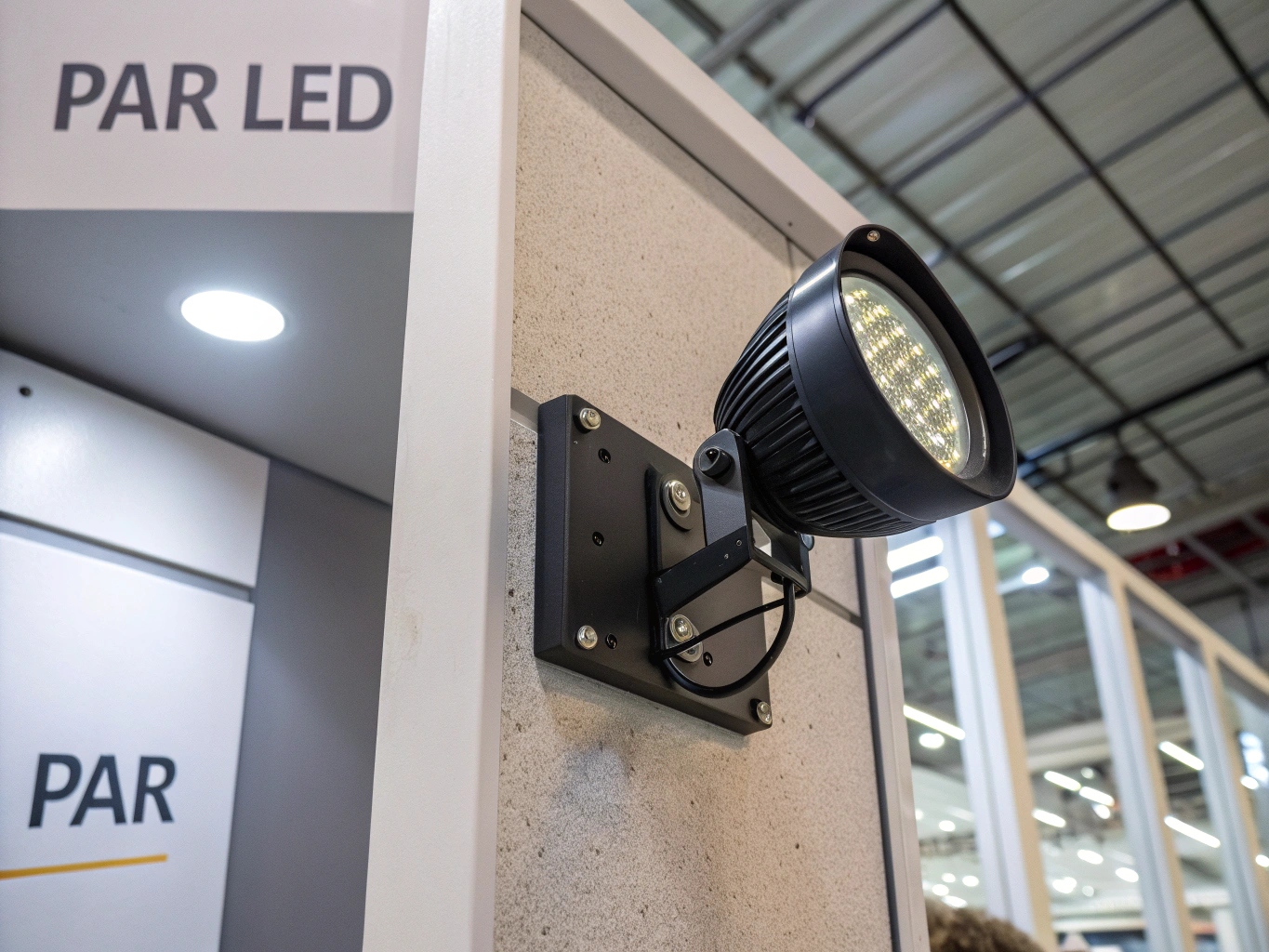
The transition to LED has changed the internal mechanics. Instead of a single lamp and a large reflector, modern LED PARs use a cluster of high-power LEDs. At Monalight, our fixtures don't use a big, inefficient reflector. Instead, each individual LED has its own precision-engineered lens or TIR (Total Internal Reflection) optic. This method provides far superior color mixing right at the source, eliminating the ugly color shadows you see in cheaper fixtures. It also gives us precise control over the beam angle. So, while we still call it an "LED PAR" because it serves the same essential role, the technology inside is a massive leap forward in efficiency, control, and quality of light.
Conventional PAR vs. Modern LED PAR
| Feature | Conventional PAR | Modern LED PAR |
|---|---|---|
| Light Source | Single Tungsten Lamp | Multiple LED Chips |
| Color | Requires physical color gels. | RGBW color mixing built-in. |
| Optics | Single Parabolic Reflector | Individual lenses/optics per LED. |
| Control | Requires external dimmer pack. | DMX control built-in. |
| Efficiency | Very high power draw, lots of heat. | Very low power draw, minimal heat. |
What are LED PAR cans?
You often hear the full term "LED PAR2 can." Is the "can" part just jargon, or does it refer to something specific about the fixture's design and durability?
LED PAR cans are the complete lighting fixture. The term "can" refers to the robust, typically cylindrical housing that encloses the LED engine, optics, and electronics, providing protection, heat dissipation, and a mounting point.
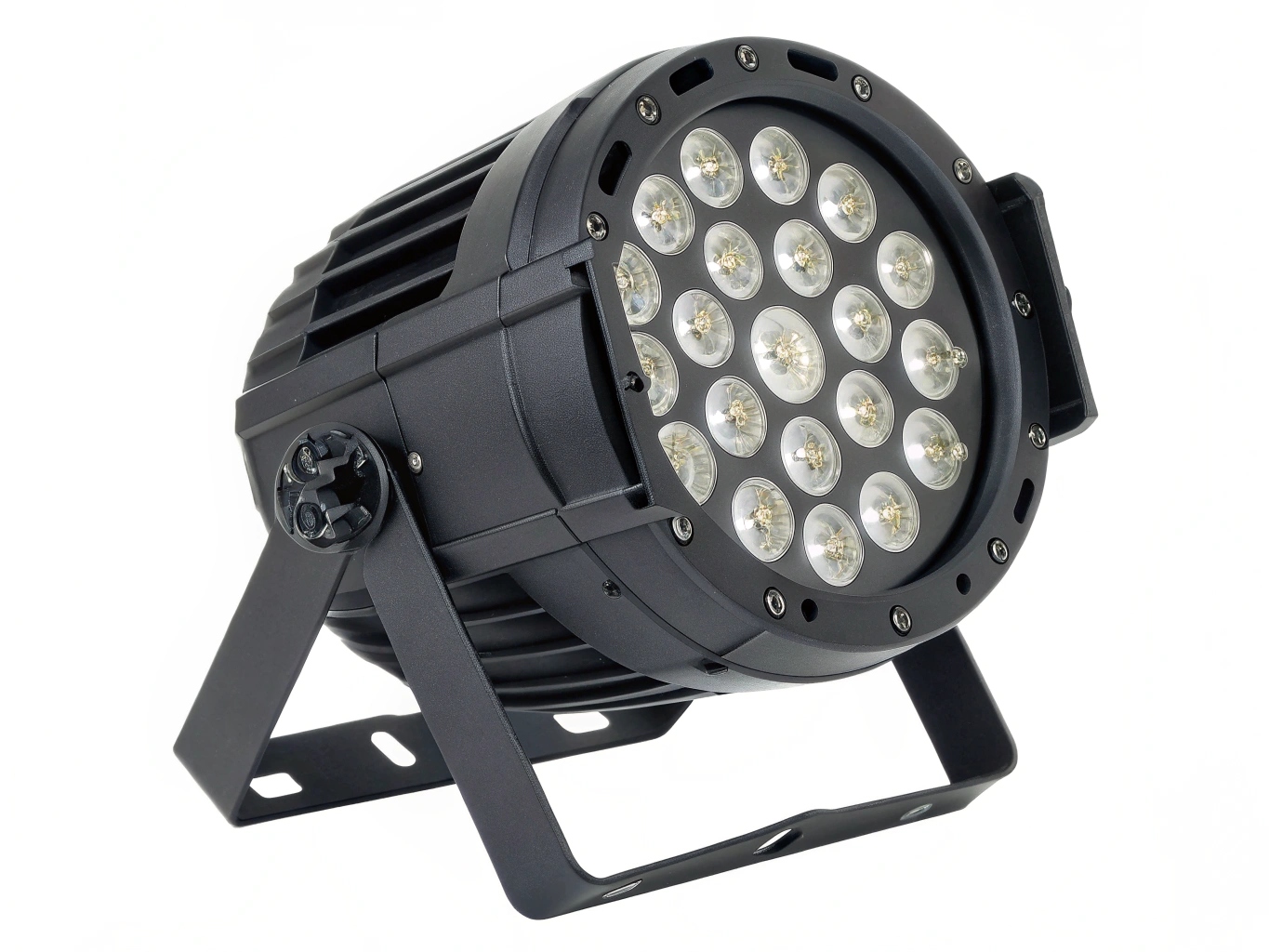
The "can" is far more than just a container; it's a critical component of the fixture's design and reliability. This housing, which we manufacture from durable cast aluminum, serves several vital functions. First, it acts as a heatsink, drawing heat away from the sensitive LED chips to ensure a long lifespan and stable performance. Second, it provides physical protection from the rigors of touring and setup. For outdoor models, the can is sealed to provide a high IP rating against water and dust. Finally, the can incorporates the yoke (the U-shaped bracket) for mounting onto trusses and stands, as well as the input/output connections for power and DMX data. A well-built can is the difference between a professional tool and a disposable toy.
What does PAR 64 mean?
You see numbers attached to PARs: PAR 64, PAR 56, PAR 38. This legacy naming system can be confusing, but it’s a simple code that tells you the fixture's size.
The number in "PAR 64" denotes the diameter of the original lamp in eighths of an inch. A PAR 64 fixture is built around a lamp that is 64/8, or 8 inches, in diameter.
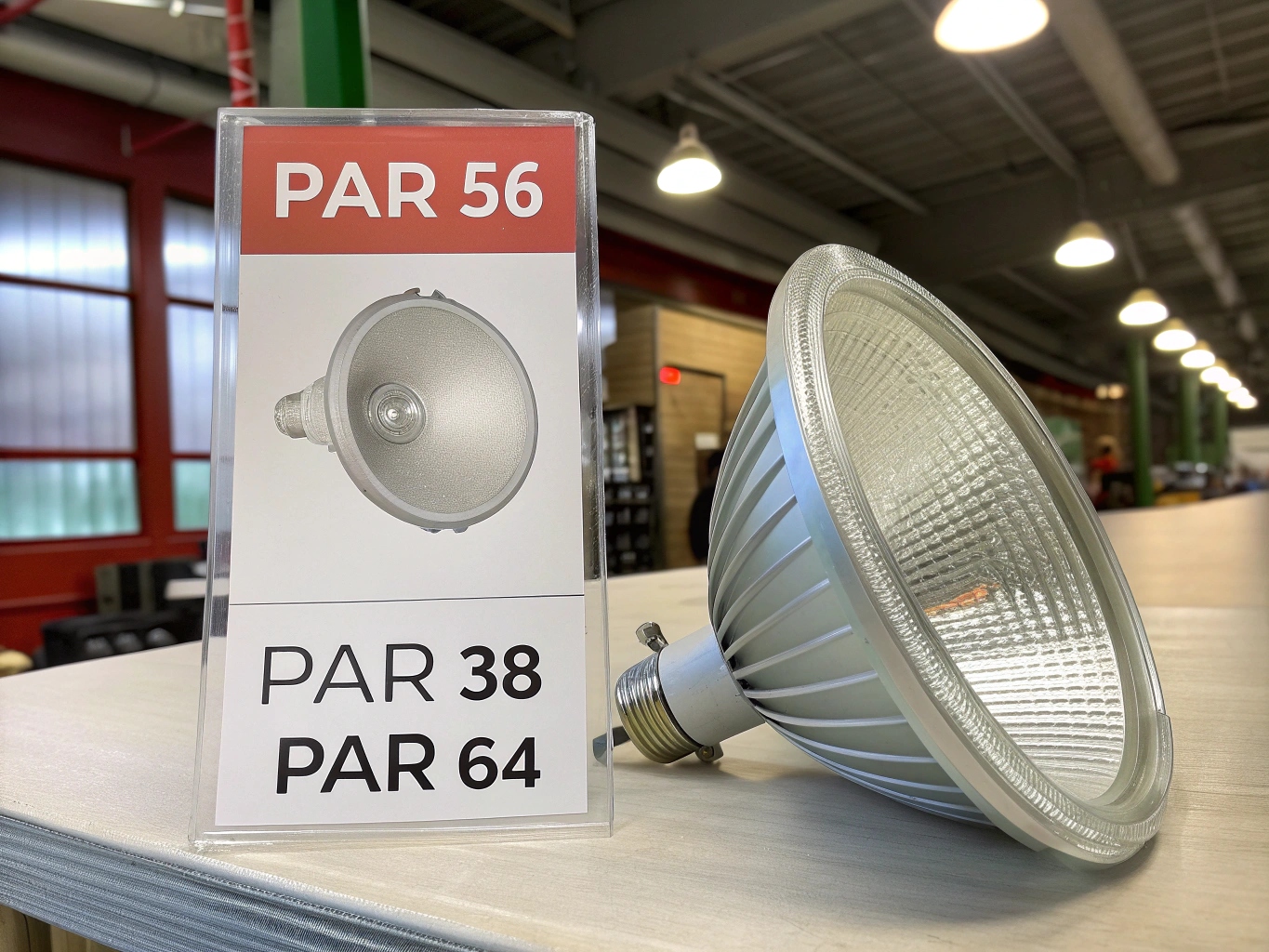
This sizing standard is a holdover from the era of conventional lamps. It was a quick way for technicians like Nick to identify the size and approximate power of a fixture just by its name. A PAR 64 was the big, 1000-watt workhorse, while a PAR 38 was a smaller accent light.
| PAR Size | Calculation (Eighths of an Inch) | Diameter | Common Use |
|---|---|---|---|
| PAR 64 | 64 / 8 | 8 inches (~203mm) | Large stages, powerful washes. |
| PAR 56 | 56 / 8 | 7 inches (~178mm) | Medium stages, theater. |
| PAR 38 | 38 / 8 | 4.75 inches (~121mm) | Small accents, architectural. |
| PAR 16 | 16 / 8 | 2 inches (~51mm) | "Birdies," set dressing. |
Even though modern LED PARs don't have a physical lamp to measure, the industry has kept this terminology. When you buy an "LED PAR 64," you know you're getting a large-format, high-power fixture that serves the same role as the classic 8-inch PAR can. It’s a useful shorthand that connects decades of lighting history.
Conclusion
The LED PAR light, evolved from a simple car headlight design, remains an essential tool. Its unmatched blend of power, simplicity, and cost-effectiveness makes it the true backbone of any professional rig.
-
Discover how color washes can transform the atmosphere of a performance and enhance visual storytelling. ↩
-
Explore the advantages of LED PAR lights, including energy efficiency and versatility in stage lighting. ↩ ↩
-
Learn about the design and functionality of Parabolic Aluminized Reflectors and their impact on lighting. ↩
-
Understand the benefits of LED fixtures, including longevity and energy savings, in contemporary lighting setups. ↩
You may also be interested in:
